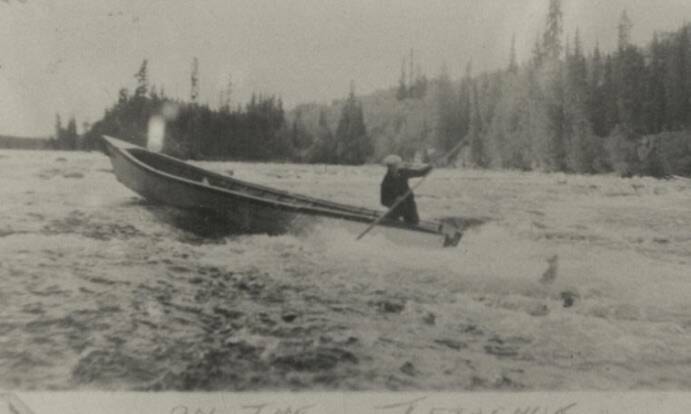Contributed by Doug Van Tine
It was about six miles to Sinclair Lake (Long Lake). The whole country changed here as it dumped into Tahtsa River, then east into the head of Ootsa. It was very shallow, marshland on both sides. Lots of red willow and meadows as far as you could see. It was nesting grounds for hundreds of thousands of geese and ducks. It was also calving grounds for moose in the spring, and wintering grounds in the winter.
When you came out of Sinclair Lake and hit the Tahtsa River, it was known as ‘The Forks’. If you went west up Tahtsa River it was all lowland, like the head of Ootsa, for miles it was all marshes and meadows.
It was about eight miles to Huckleberry Mountain; past it was the Troitsa River with excellent fishing. If you continued about four miles, you came to Tahtsa Lake. Again, like Pondosy, the water was turquoise, with mountains on both sides. Tahtsa was mostly rocky shorelines, running about 12 miles west again into the Coast Range. Spectacular scenery, although, because of the milky water, the only good fishing was on the Troitsa River. The area was a haven for mountain goats.
At the head of Ootsa Lake, the Tahtsa river meandered slowly into the lake. On the north side there was more than a mile of mud flats and wetlands, covered in red willow. There was a place there called ‘Soda Springs’ where the First Nations family of ‘Jimmy Andrews’ lived.
Jimmy raised his family right there. He hunted, trapped and guided hunters; he netted Kokanee by the boatload, for the fox and mink farmers. They raised some animals and chickens. They lived totally off the land and asked nobody for anything. They were some of the most respected people in the country. He was one of the nicest men I’ve ever known.
Moving east on the lake on the south shore was a point called Windy Point. Very well named and it lived up to its name. But it also had a perfect shelter, a small calm lake fed by a narrow inlet from Ootsa. From Windy Point east along the south shore lived a few bachelors. There was speculation that perhaps they were hiding from the law. Max Enter was one of them.
The north side of the lake was mostly farmland and privately owned, with over 80 families that made a good living there. There were many beaches and sheltered coves and bays, the full length of Ootsa, as I mentioned earlier.
Have a story tip? Email:
Eddie Huband
Multimedia Reporter
eddie.huband@ldnews.net
Like us on Facebook and follow us on Twitter.
